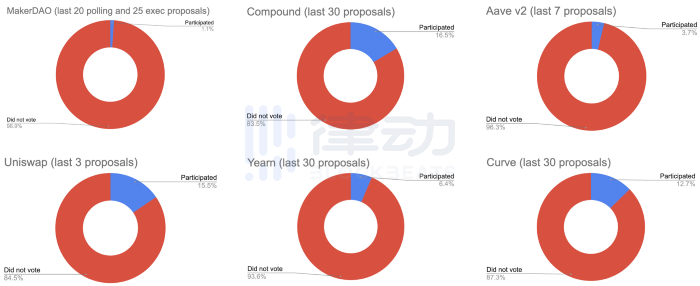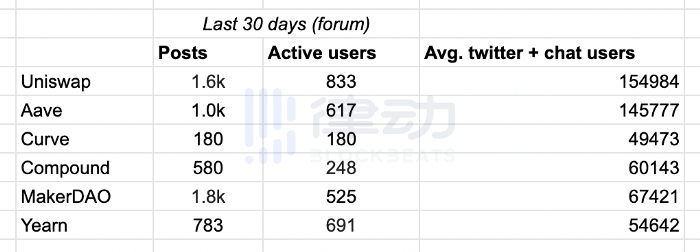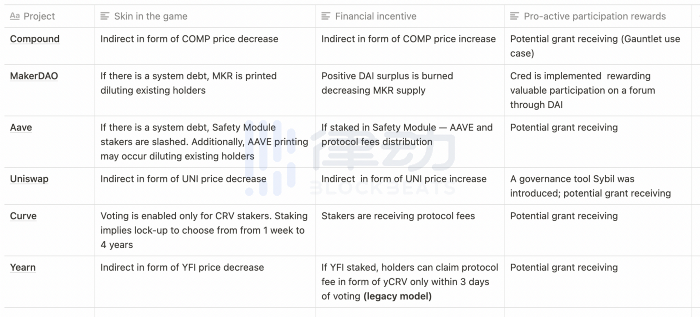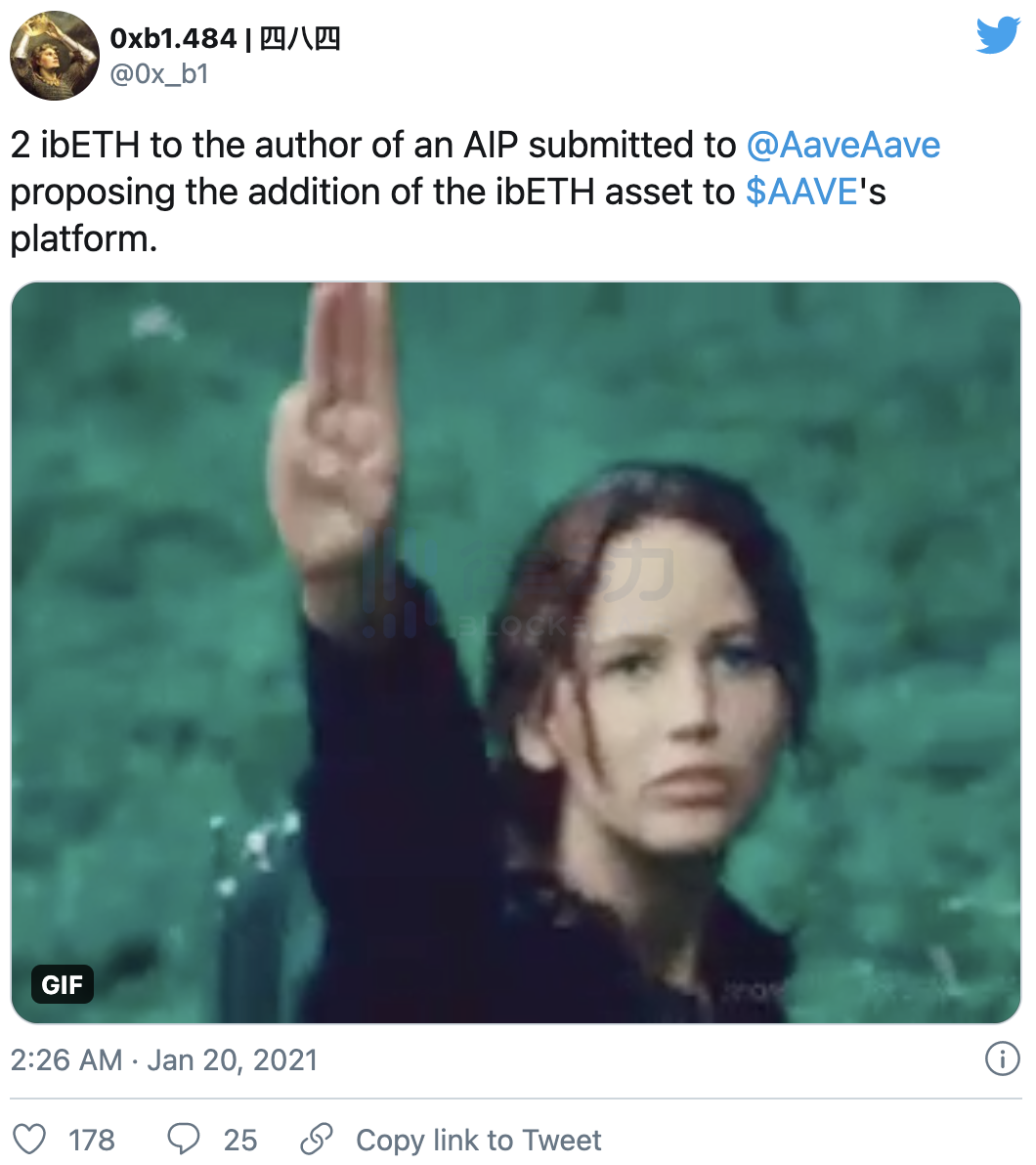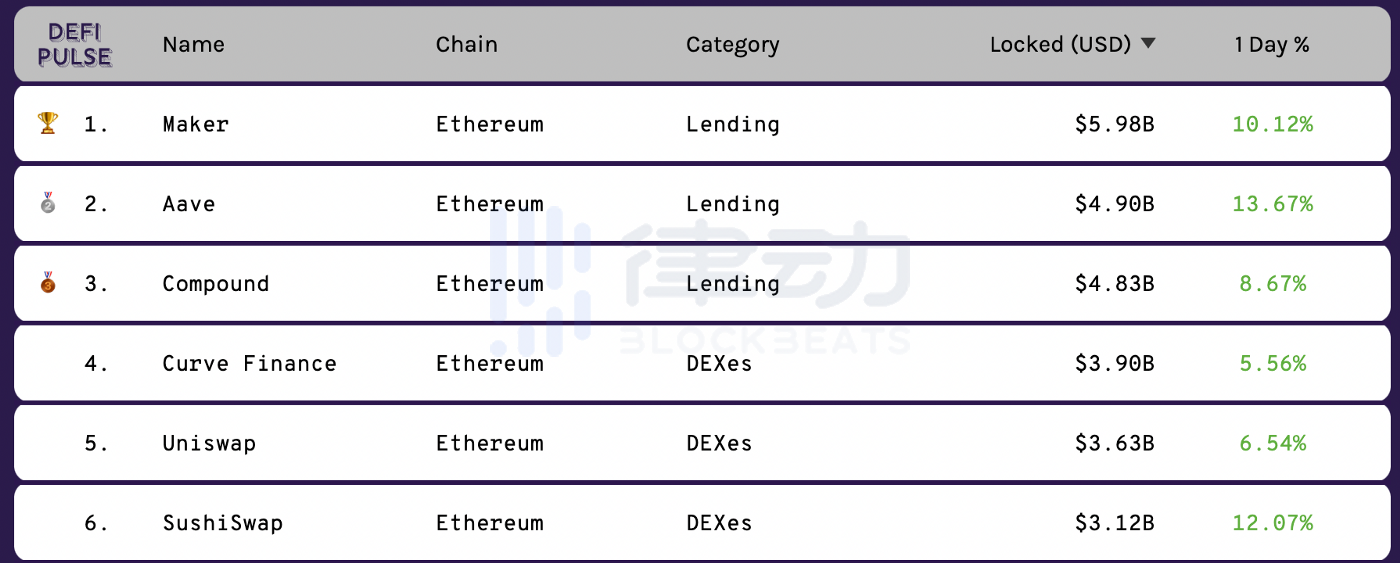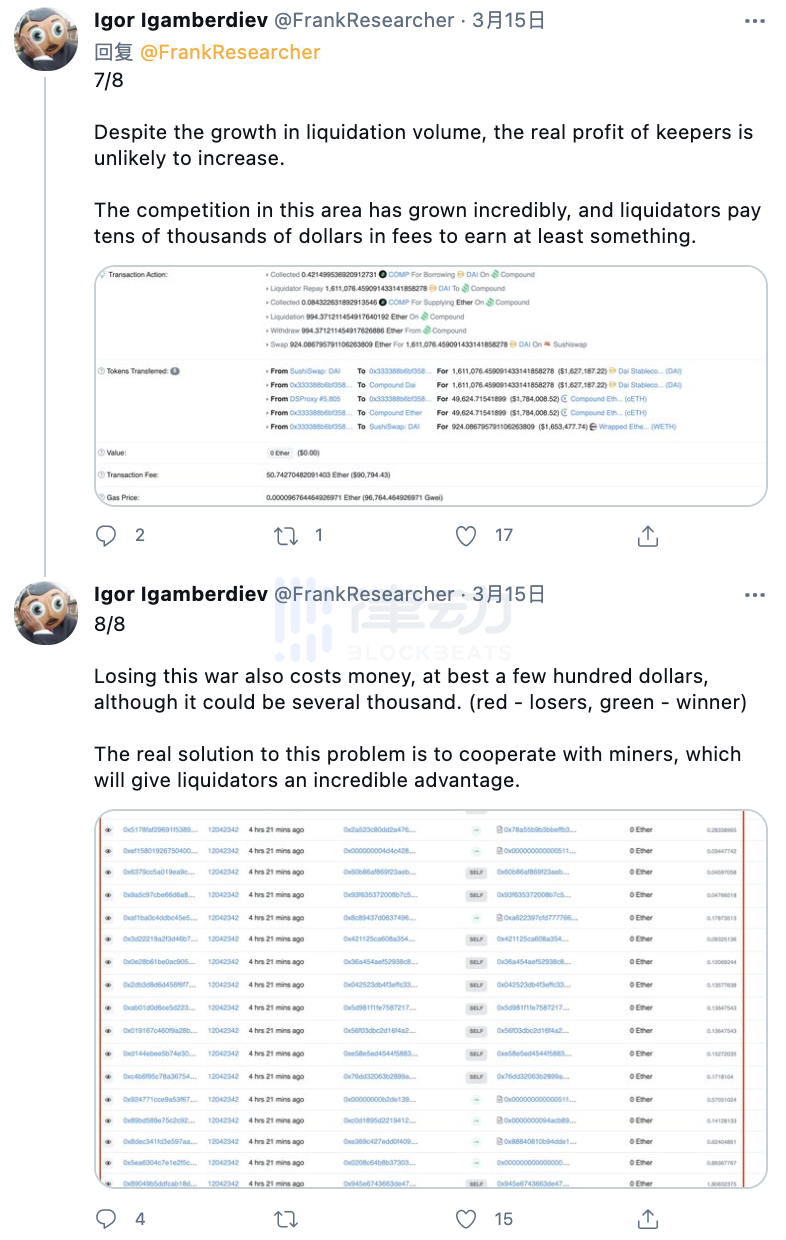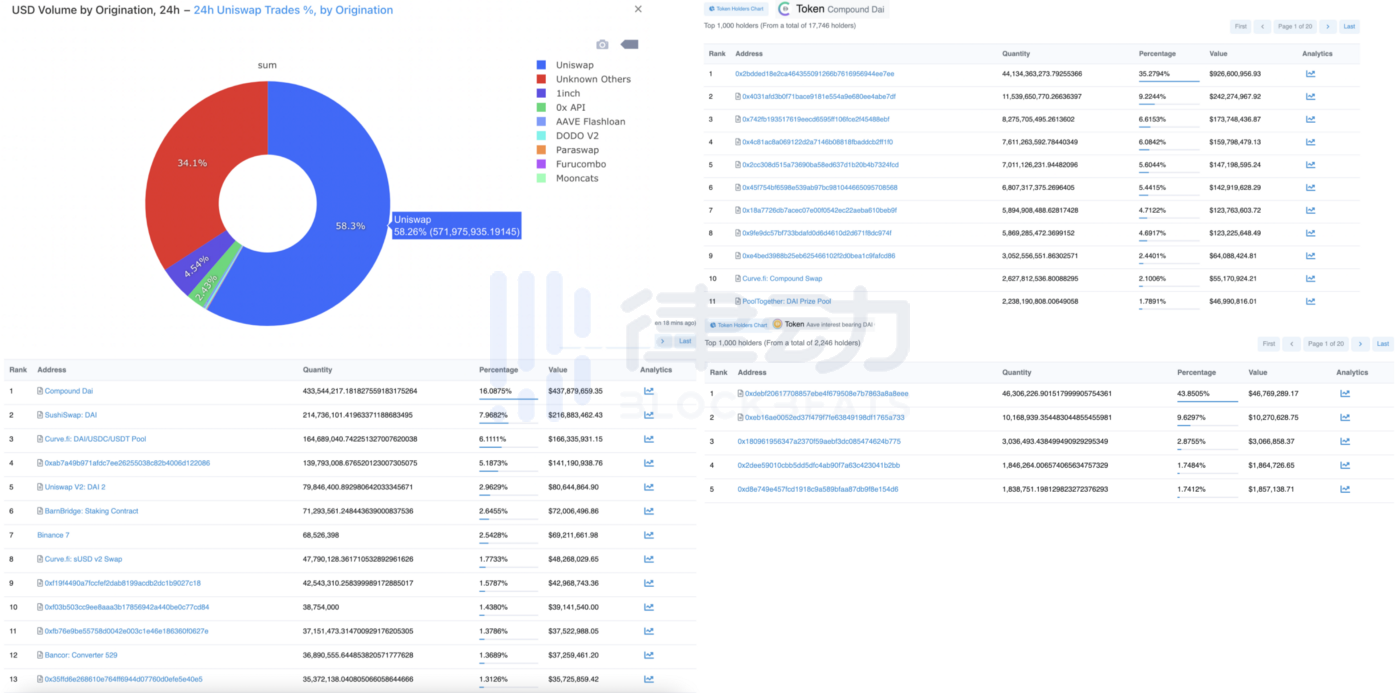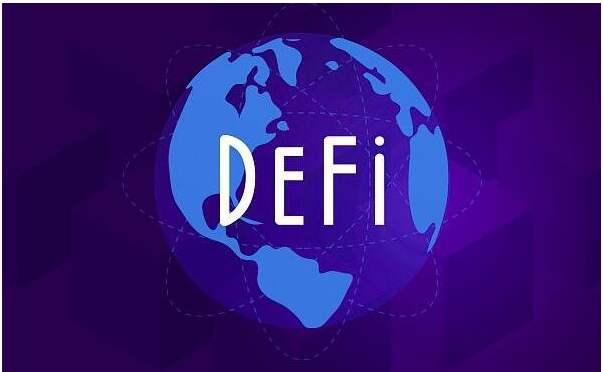DeFi Market Identity Atlas: Leaders, Hackers, Developers, Bots, and Retail Investors
The author of this article is Vadym Nesterenko, translated by Rhythm.
Recently, the total number of DeFi users surged to 1.6 million, with a large number of users and community members actively participating in DeFi protocols on Discord, Telegram, and forums every day. But who are these users? What are their needs and motivations for using and supporting specific protocols?
Source: Dune Analytics
There are roughly six main groups in the DeFi protocol ecosystem:
- Protocol leaders (politicians);
- Liquidators and arbitrageurs;
- Developers and builders of the protocol;
- Liquidity providers;
- Users on the demand side (e.g., borrowers, traders, premium payers);
- Hackers.
For a protocol, it is crucial to coordinate and balance the incentives among these groups to scale while maintaining system security. Ignoring any one factor will ultimately lead to systemic risks and a departure from the growth curve.
The main purpose of this article is to break down each user type and describe a simplified empathy map, hoping it will be helpful for product developers.
1. Protocol Leaders
On the path of continuous development towards decentralization, the founding team should eventually resign from their role as the sole decision-makers and achieve community ownership. In practice, this means empowering rights and tools to manage a protocol to maintain decentralization while ensuring growth and security.
Source: Aavenomics
Protocol leaders are individuals or entities that drive changes in the protocol, which should help the protocol fix its flaws and propose suggestions for scaling.
Their daily work typically involves drafting proposals, participating in discussions and debates on forums and Discord, and expressing opinions through on-chain voting. There is no unified definition, but protocol leaders should not be direct stakeholders (teams and investors) and can be common across protocols, ensuring a fair working approach.
The main question is: How to cultivate advocates for the protocol rather than speculators?
Let’s try to understand the motivations of protocol leaders, briefly analyze governance incentive models, and define ways for improvement.
Motivations
Breaking down and abstracting non-financial motivations is complex. Why facilitate protocol x on protocol y? In contrast, economic incentives are more universal and can be inherited from one protocol to another. Incentives in DeFi typically include:
(1) Governance tokens;
(2) Protocol fee sharing;
(3) Bonuses.
Tokens are usually distributed through airdrops, liquidity mining, or sales. This approach helps to expand the number of holders and incentivizes the community. However, many users buy and mine tokens purely for speculation, or even hold tokens to ride for free. Apart from potential token price growth, most governance models do not provide any economic incentives. Moreover, only a few protocols make token holders stakeholders, which may stimulate thoughtful decision-making.
Source: https://jessewalden.com/progressive-decentralization-a-playbook-for-building-crypto-applications/
The distribution of protocol fees is a very practical way to incentivize governance participation. In this case, voters should consider not only profit maximization but also the long-term development of the protocol.
First, let’s examine the Snapshot governance activities of leading DeFi protocols:
There is no universally accepted benchmark for good governance participation. In fact, most decisions are made on forums, considering that most on-chain proposals are uncontroversial, community on-chain participation is unnecessary.
For example, MakerDAO has relatively low on-chain participation, but forum activity has been very active throughout all market cycles.
Now let’s look at what the motivations for participating in governance are and what the incentive models are:
There are three key components that may lead to effective protocol governance:
- Skin in the game
If governance is mishandled, governance participants should bear the financial risks of the consequences. The best examples include long-term locks (Curve), penalties/payment insurance funds (Aave), and dilution (MakerDAO, Aave). Note: Fear of loss should not be the only motivating factor;
- System financial incentives
Revenue is always a good metric, indicating that the system is functioning correctly to some extent. Therefore, accurate governance should be rewarded in the form of protocol profit sharing. Note: It should not be the only motivating factor, as decisions may ultimately lean towards short-term profit maximization;
- Protocol leader rewards
The above two methods are good, but they do not recognize active governance participation nor distinguish between true contributors and free riders. Valuable activities on forums and Discord should be rewarded to retain and attract active governance contributors.
So, what can we do?
An urgent improvement lies in recognizing the role of active participation and curbing free riding. Several protocols are already designing incentive mechanisms for contributors to forums and Discord chats. This process has recently been referred to as "governance mining." This concept has been introduced by the Maker, Balancer, and Indexcoop communities.
Balancer's "governance mining" proposal
Token holders are already willing to pay; how cool is that?
There are also some other methods to increase overall governance activity:
Meta-governance and DAO composability. There are now indices and voting aggregators that allow participation in different votes from the same place or a meta-token to participate in the governance of other projects. Including indices or listing on voting aggregators can increase on-chain participation;
Allow voting on proposals using liquidity LP tokens (e.g., Sushiswap);
Implement gas fee refunds for those who vote online (e.g., Uma);
Reward "correct" votes (e.g., Uma);
Launch funding programs for protocol politicians (e.g., Compound, Yearn).
2. Liquidators and Arbitrageurs
These participants are the "mysterious" market players who operate behind the scenes, and their activities are not obvious, but they play a crucial role in the healthy functioning of DeFi. A significant part of DeFi is built on collateral-based protocols (MakerDAO, Aave, Compound) and DEXs (Uniswap, Balancer, Curve, Sushi), which cannot operate without these protocols. In short, when the value of collateral declines, liquidators remain solvent, repaying system debts, while arbitrageurs link asset prices to market prices.
Source: DeFi Pulse
The motivation is clear—liquidators can buy collateral at a "discount," and arbitrageurs can profit from the price differences between asset management mechanisms or centralized trading platforms.
The significance of these two roles differs, and their requirements for the protocol also vary. A DEX may not care about the convenience of arbitrageurs. Their laxity or inactivity will not harm the entire system; only some traders and liquidity providers will be affected in the short term. Ultimately, someone will adjust prices because there are clear profit opportunities.
In contrast, in lending protocols, if liquidators fail and liquidation cannot be profitable, the market price of collateral can reach the quoted price. This can ultimately lead to the bankruptcy of the entire system, resulting in unpaid debts in the system—meaning that from now on, depositors cannot withdraw their funds. To mitigate this risk and handle such situations, many protocols have designed system capital restructuring mechanisms (token printing, safety modules, reserves). This has happened several times, and there are no strong guarantees to prevent it from happening again. In such cases, protocols rely more on the participation of liquidators and the size of internal insurance funds, but these measures are insufficient in the event of a sharp market crash. Solvency is key to the prosperity of lending protocols.
Is there any protocol that can ensure the availability of arbitrageurs and liquidators? Usually, providing competitive incentives is enough. The inherent challenges faced by these market participants—competing with each other, gas optimization, MEV—are not specific to any one protocol. Moreover, under normal market conditions, competition is exceptionally fierce.
For new protocols with little liquidity, the scarcity of liquidator activity is a consequent problem. A common practice is to provide basic bots to simplify the onboarding process and guide the infrastructure for liquidators. However, such bots are likely to lack competitiveness without adjustments or even a complete redesign. UMA introduced a good example of liquidation incentives. For instance, UMA's liquidation requires a lock-up period of several hours, and if the liquidation is challenged, the lock-up period may be extended. This is why teams need to provide strong incentives to guide robust liquidation infrastructure.
Some liquidation tasks can and should be delegated to other liquidators to reduce the centralization of the core development team.
Source: https://keep3r.network/
Sometimes, the impact of arbitrage and liquidation on the market can be mixed, creating unintended vulnerabilities. We will discuss these situations later in the hacker section.
3. Protocol Developers and Contributors
Developers are the driving force behind DeFi and the blockchain market, serving as the primary source of innovation and new use cases. Today, most inventions in the DeFi space are created by developers, with rapid product releases that make the market exceptionally active. This approach aligns well with the Lean Startup philosophy in Silicon Valley. You propose a crazy idea and validate it directly through the market.
In DeFi, attracting developers and applications to build or integrate on top of protocols is crucial, as it enhances network effects and composability, which are key to industry growth. The effective leverage of composability is positively correlated with key metrics (e.g., TVL and trading volume). The best examples are MakerDAO's DAI, Aave, Compound, and Uniswap. Therefore, we can observe a clear correlation between integration and TVL/trading volume.
Source: 24h Uniswap Trades %, by Origination, cDAI holders, DAI holders, aDAI holders
Due to composability and public functionality, there is less need to collaborate with other projects; protocols can now easily integrate with each other, enhancing each other's value support.
With deeper protocol-to-protocol (or machine-to-machine) collaboration, the level of composability becomes higher, aimed at maximizing liquidity utilization, leverage, and consistency of protocol goals. This allows all stakeholders to achieve a win-win situation. A great example of this approach is the yearn.finance (YFI) ecosystem.
4. Hackers
Unfortunately, decentralization and huge profits come at a high cost. Novel use cases, lack of security standards, flash loans, and the characteristics of blockchain itself make system vulnerabilities more complex, leading to hacks/bugs and causing millions of dollars in losses. In 2020, there was an average of one DeFi hack every 14.6 days.
Source: https://explore.duneanalytics.com/queries/1439#2469
This data is indeed disheartening, but sometimes hackers can provide a positive long-term impact on the attacked protocol and even the entire market. A notable example is the Black Thursday incident, which may have been a significant reason for further prioritizing MakerDAO, including accelerating the addition of new collateral types to maximize diversification and reduce the risk of shortage events.
The end result is that this helps to increase TVL and profits for MKR token holders, and more importantly, makes DAI more robust.
Source: https://explore.duneanalytics.com/queries/1439#2469
Undoubtedly, the best approach is to avoid hacks, but it is also important to encourage hackers to choose white-hat actions rather than hiding stolen assets.
In this regard, Immunefi has proposed a good solution that allows projects to set up bug bounties and recruit white-hat hackers to test vulnerabilities in exchange for rewards.
5. Liquidity Providers (LP) and Users with Actual Demand
DeFi protocols are often a two-sided market, with the most prominent user pairs being lenders-borrowers, LP-traders, premium payers-insurance capital providers, etc. Theoretically, this means solving the chicken-and-egg problem. However, with the introduction of liquidity mining, the empathy map for LPs has become more apparent. Even without liquidity mining, the average annual interest rate in the cryptocurrency market remains very attractive compared to the real world, where deposit rates are negative.
For example, if a protocol is designed with a target APY higher than Curve pools (which yield over 20% for stablecoins), then it is not a problem to launch it recently and attract significant funding.
A bad practice is to conduct liquidity mining simultaneously with product launch. Due to product/market fit or merely token mining, it is nearly impossible to accurately determine why protocol data is growing. Sooner or later, APY will normalize, and if the value pillars do not work, the protocol's user churn rate will increase, making it very difficult to regain users. Leading DeFi protocols with liquidity mining plans, such as Compound, Curve, and Uniswap, had already established significant market positions when they launched their tokens. Liquidity mining is undoubtedly one of the most effective growth secrets in DeFi, but you need something validated to scale.
Mechanism Capital has proposed a quantitative framework for launching liquidity mining programs.
Observing the top 5 DeFi protocols by TVL, 3 out of the 5 projects do not have liquidity mining. This again highlights the importance of organic growth.
Increasing demand for protocols can be a bit tricky. Subsidizing this user group does not make much sense, as it would raise borrowing/premium rates, pushing away actual target users who are crucial for organic growth.
Can DeFi protocols successfully capture these users? One might argue that TVL is increasing, so everything is fine. However, this is a vanity metric that does not accurately reflect the situation at the micro level of the protocol. For example, it is often inaccurately applied to lending protocols because total borrowing reduces TVL. Additionally, there is a situation where TVL can grow merely because the price of locked assets rises.
For example, let’s look at the daily real growth rate of lending protocols and the total net lending volume:
Source: https://explore.duneanalytics.com/dashboard/lending
This is not comprehensive data. But it is certain that improvements in these metrics are precisely what scale the protocol and the DeFi market.
6. Final Summary
The communities of blockchain projects are not homogeneous, requiring a tailored approach to each project's user group. Growth strategies and incentives should consider all relevant parties. Nowadays, in the DeFi space, most attention is focused on LPs, whose contributions are often over-incentivized. Each protocol must personally define the weight of each user group and how to cultivate them.
Finally, a thought to leave you with: tokens are an unprecedented and efficient coordination and incentive tool. But suppose a protocol had no tokens; how would you coordinate the community, and what would the growth strategy be?








